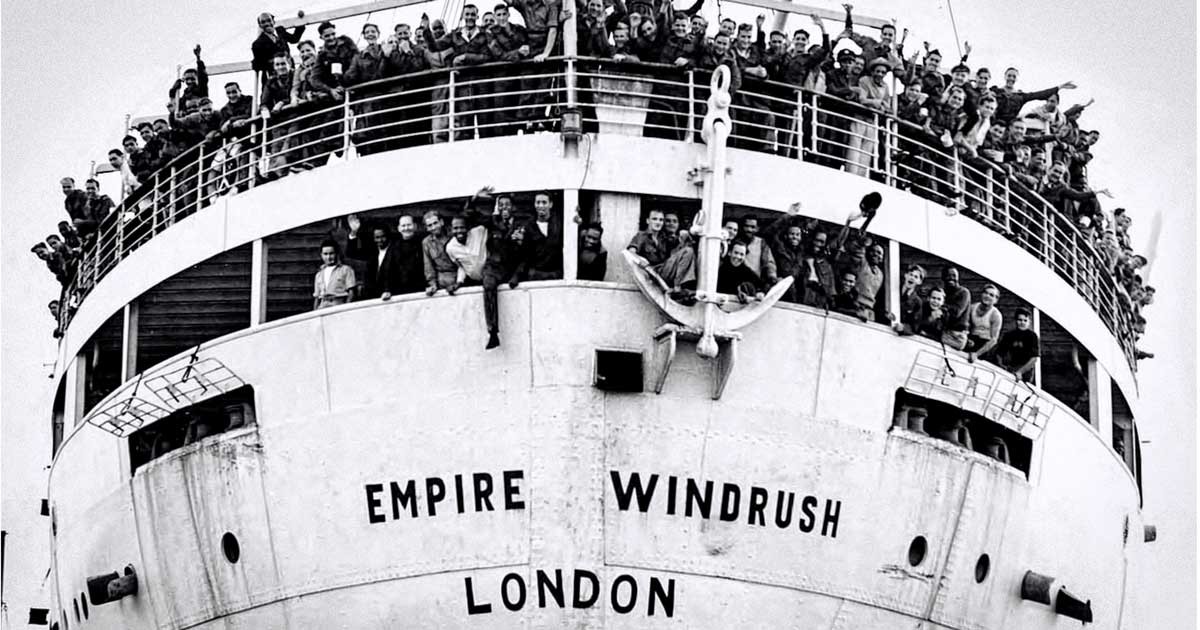It has been a decade since the then-Home Secretary Theresa May made her now-infamous comments about creating a ‘really hostile environment’ for undocumented migrants. The ensuing policy programme institutionalised and entrenched a largely bureaucratic system of ‘internal’ immigration controls, namely border enforcement activities undertaken within the UK. While the somewhat crude naming of this programme as the ‘hostile environment’ might be seen to enclose a wide history of bureaucratic exclusion of migrants in the UK, this act of naming has also helped to create a banner behind which communities and campaigners organised to resist its pernicious effects.
In the shadow of this programme, a change to the immigration rules in July 2012 created a 10-year route to settlement for those on private and family life routes. Under this route, those who may have previously been eligible to apply for Discretionary Leave to Remain and later Indefinite Leave to Remain after 6 years are now required to renew their leave every 30 months or so. If they accrue continuous leave for 10 years and meet other relevant criteria, they become eligible to apply for Indefinite Leave to Remain. There is a shorter 5-year route to settlement, but this is usually only available for those with greater financial means.
Some on the 10-year route might also have been undocumented at some point previously, which excludes them from accessing the 5-year route. Those on the 10-year route usually have the no recourse to public funds (NRPF) condition attached to their visa; a legislative condition introduced in the Immigration and Asylum Act 1999 to prevent migrants accessing most mainstream welfare. The introduction of the 10-year route thus imposed wide-sweeping restriction of social rights for those who have often already lived in the UK for a long time; recently arrived migrants are often the more common targets of such restrictions.
The financial burdens facing individuals with precarious immigration status are significant. Over the last decade, immigration fees have steadily increased; on average, it would cost just under £13,000 for one adult to reach settlement on the 10-year route. Despite some successful litigation over the years to bring certain groups back into scope, legal aid for most immigration cases is unavailable unless in exceptional circumstances following expansive LASPO cuts in 2012. The NHS surcharge, introduced and later entrenched through the Immigration Acts 2014 and 2016, imposes additional costs for each visa renewal.
Any break in continuous leave over the 10 years, such as for those who cannot afford the visa renewal, means that individuals are at risk of having to start the process again from scratch. If an individual owes a particular form of debt, they will be unable to access long-term settlement at 10 years even if they meet other criteria. The expansion of this regime has contributed towards a significant portion of people on this route facing destitution, or the risk of becoming undocumented if they cannot afford to renew their visa. The boundary between being documented and undocumented therefore becomes especially porous under this route.
The impact of these exorbitant costs for those on the 10-year route is aggravated by the labour conditions they commonly face. Many people on this route are in low-paid, insecure work that leaves them unable to cover basic living costs. Precarious immigration status creates an exploited category of workers who are less able to challenge their conditions through fear of policing, detention and removal. While the connections between precarious status and reduced labour rights are not as explicitly imbued within this visa route as others, such as the Seasonal Worker Visa, they still exist in a way that enables capital accumulation at workers’ expense.
Here, we see the cracks emerge in the state narrative of reducing migration and the reality of reliance upon exploited precarious workers’ labour. As Harsha Walia highlights in her monograph, Border and Rule: Global Migration, Capitalism, and the rise of Racist Nationalism, ‘while workers are declared illegal, the surplus value they create is never deemed illegal.’ A financially burdensome and bureaucratically complex border regime, as enacted through the 10-year route, helps to produce and police a precarious status that enables labour exploitation.
While those on the 10-year route are largely precluded from accessing welfare benefits, they are able to submit a ‘change of conditions’ application to remove the NRPF condition from their visa. This application also requires various forms of evidence of ongoing, or nascent destitution. The change of conditions process itself has been fraught with barriers such as bureaucratic delays faced by already struggling individuals. Applicants can legally challenge delays or negative Home Office decisions if supported to do so. However, the change of conditions process arises out of a wider ideological refusal to provide migrants access to social welfare, so these legal remedies are often only partial in their ability to systematically address material needs. Even when a change of conditions application is successful, one is then required to navigate the welfare system. As such, those on the 10-year route face a double burden of proof before they can access basic subsistence.
The entanglement of immigration controls with the welfare state has existed since the inception of the latter. As Steve Cohen explains, ‘it is not an accident or a trivialisation that much legislation and institutions of the welfare state have been prefaced with the adjective “national”’. The imbrication of internal bordering processes with the welfare state, in mediating and restricting access to often inadequate state provision (the suitability of welfare support in meeting the needs of those who access it, including during the pandemic, has also been examined by the Child Poverty Action Group), is crucial to the operation of this policy.
There is historic precedent for advocacy and campaigning in the UK that has sought to elucidate the connections between restrictions on the rights of migrants and infringements upon the rights of racialised citizens. While it is important that the threads connecting these issues have been highlighted again in more recent campaigns against the ‘hostile environment’ policies, there is also a more complex relationship between racialised citizen and ‘non-citizen’ rights.
The current interaction between the welfare system and border controls is shaped by decades of neoliberal policymaking. While it has never been universal, the development of a welfare state following World War II enabled many citizens to access social rights in ways that had previously been unavailable. This function has been reorganised over time; the welfare state is increasingly viewed as something to be managed and reduced, emboldening a punitive system that disproportionately punishes some of its most marginalised citizens. The contemporary consensus on welfare access for migrants and asylum seekers has been shaped by the Thatcher government’s roll-back approach to social welfare assistance (1979-1990), later shored up by the Labour governments of 1997-2003. One pertinent piece of legislation is the Immigration and Asylum Act (1999), which introduced a voucher system to replace cash payments for destitute asylum claimants and articulated a legal definition of the NRPF condition within statute for the first time.
Precarious migrant populations have commonly been a testing ground for social and welfare policies later proposed, or introduced for citizen or other ‘non-citizen’ groups. Policies surrounding the use of photo ID cards, charging citizens for NHS care, and the ongoing political ping-pong around Universal Credit rates, all have precursors in measures introduced to restrict the social rights of migrant groups. More recently, the political resilience of the 10-year route has informed asylum policy, with a parallel status of ‘temporary refugee permission to stay’ being introduced for asylum seekers under the Nationality and Borders Act 2022. Those granted refugee status are placed into one of two groups depending on how they arrived in the UK. Those in group two who do not arrive through Home Office ‘approved’ routes are granted 30 months of leave that they must keep renewing – much like the 10-year route – with no clear path to long-term settlement. This new route effectively penalises asylum seekers who do not meet strict conditions around arrival, creating a sub-group with less rights in a way that is comparable to differences between those on the 5 and 10-year routes to settlement.
Although forcibly inscribing boundaries of citizenship and its conferred rights is central to the welfare state, not all citizens are made the same. Those on the 10-year route are often in mixed-status families, for instance where parents with precarious status have children with British citizenship. According to immigration and welfare rules, British children whose parents have NRPF are ineligible for child-related welfare benefits they might otherwise need. While there has been some successful litigation around this, it has focused on cases of British citizen children with migrant parents who are denied access to welfare. These tend to be more sympathetic legal cases as the child’s citizenship arguably demarcates them deserving of protections compared to non-citizen peers. While litigation is often necessary for securing greater social rights, there are fundamental restrictions to the context in which these rights can be secured. Without a wider coalition of solidarity movements that fight for all migrants, these legal remedies remain limited in scope.
The reduced rights of citizen family members of non-citizens reveals the expansiveness of internal bordering processes. Moreover, regimes of racialisation are coterminous with stratification of citizenship. Racialised, mixed-status families are marginalised by immigration rules, reinforcing their status as marginal to society and deserving of the poverty arising out of their reduced rights. Bridget Anderson’s constellation of good, failed and non-citizens demonstrates the conditionality of belonging. As Simon Guetener has identified, failed citizens end up subject to ‘class-based welfare chauvinism…the idea that welfare recipients, whatever their national status, are of lower value as citizens than nonrecipients’. Indeed, according to contemporary neoliberal welfare ideology, precisely those who need this support are demarcated undeserving of its protections. Unpicking the complex enmeshment of these systems of governance helps us to understand the contingency of social rights, and to recognise the limitations of efforts to salvage and expand categories of citizenship.
It would be amiss not to acknowledge that the highest proportion of people on the 10-year route originate from Britain’s former colonies. The top 5 nationalities of applicants on this route are Nigerian, Pakistani, Indian, Ghanaian and Bangladeshi. While the legacies of British colonialism forge irrefutable ties that bring formerly colonised subjects to the UK, they also shape the inherent contradictions of the welfare state. GK Bhambra has found that the development of a British welfare state following World War II was only made possible by the ‘imperial dividend’ extracted from empire, often at the expense of autonomous movements for social rights among colonised peoples. The current system of welfare in the UK would not exist without this colonial context. As such, a common discourse of whether non-citizens from countries that continue to be ravaged by the effects of colonialism deserve welfare seems especially fatuous. The role of debt within this context is multifarious; individuals face debt through exorbitant visa costs and such debt jeopardises their future within the country. While the UK border system forces people into debt, any reckoning with what historical debt might be owed to them remains obscured.
The implementation and progression of the 10-year route provides insight into the connections between a range of interlocking regimes, including welfare, citizenship and the wider system of internal border controls. Analysis of this apparently niche immigration policy reveals some of specific conditions faced by those with precarious status such as poverty and labour exploitation. In understanding the commonalities between non-citizens and citizens who find themselves outside of the boundaries of desirable neoliberal subjecthood, the limitations of a political framework that seeks to expand inclusion into citizenship are revealed. Challenging policies through advocacy and litigation interventions can help to alleviate immediate concerns, but there are also key limitations surrounding the scope of change effected by such efforts. It is necessary to be cognisant of where reforming the contours of a system might act to keep its more harmful foundations intact.
It is not possible to analyse the effects of the last decade of border controls without also acknowledging the growing resistance that has coincided with it. This includes necessary advocacy and litigation by organisations, but also grassroots movements to resist deportations, immigration raids and wider effects of street and community-level intrusion of border controls. We have also seen ongoing efforts around material poverty-relief and mutual aid to financially support people with their visa applications or other living costs, as well as unions mobilising to protect the rights of precarious migrant workers. Members of the working class, such as healthcare workers, continue to resist the ways that they are made into border guards to police and restrict the social rights of migrants. All of this helps to produce a technology of resistance that is predicated upon care and solidarity.
Generations of movements against state racism and border violence have shown us that we need struggle from an engaged working class in order to meaningfully challenge, and fundamentally abolish, violent border regimes. It is possible to develop emboldened movements of solidarity by continually situating the struggles of those with precarious status within the context of a wider working class that continues to be subject to reduced welfare rights, increased poverty, more recently the so-called ‘cost of living crisis’ and more.
This is not an arbitrary call for solidarity along class lines that obscures the specificities of race and citizenship; rather a reminder that there are clear bonds to be built due to shared immiseration at the hands of the state.






